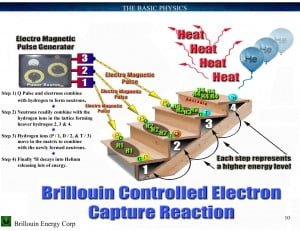Thirty years ago on April 26, 1989, Drs. Martin Fleischmann and Stanley Pons were in the midst of a barrage of inquiries about their discovery. Visitors to their basement lab on the UU campus were treated to a tour, and came away satisfied. Others elsewhere were setting up cells, and failing to reproduce the excess heat effect the pair had claimed was nuclear in origin.

Excitement and confusion carried the news to the U.S Congress where a hearing would be held. A group representing the University of Utah, including Drs. Fleischmann and Pons, the University President Dr. Chase Peterson, and the Vice-President for Research Dr. James J. Brophy would update the House Science, Space, and Technology Committee, and ask for research funding to explore this new effect.
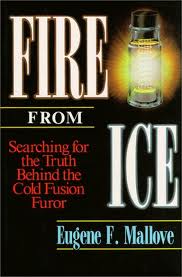
This was documented in the Pulitzer-prize nominated book Fire From Ice Searching for the Truth Behind the Cold Fusion Furor by Eugene F. Mallove which chronicles the early days of Condensed Matter Nuclear Science.
Buy right! Get a copy of Fire from Ice from Eugene Mallove’s Infinite Energy Foundation.
Mallove writes on page 87:
At 9:45 A.A., Room 2318 in the Rayburn House Office Building was packed. Chairman Roe in his prefacing remarks held up the promise of a golden age: ” Today, we may be poised on the threshold of a new era. It is possible that we may be witnessing the cold fusion revolution, so to speak. If so, Man will be unshackled from his dependence on finite energy resources.” The ranking Republican member of the Committee Robert Walker of Pennsylvania, sang the tune of small science, which Pons and Fleischmann had come to personify: “If this discover is fully proven, it will show once again the importance of supporting a vigorous small science enterprise in this period of large engineering and science projects… If the initial results are verified, it is essential that we do everything we can do to develop the promise of cold fusion.” He chilled the hot fusion scientist who were present: “I was pleased that the committee’s Energy Research and Development Subcommittee accepted my amendment during its April 6 markup authorizing that $5 million be redirected from the Magnetic Fusion Program in to the basic Energy Science activity, specifically for room temperature fusion.” He said he would move in the direction of upping that to $25 million. These high states were really making the hot fusion people sweat, but despite their skepticism, they could not be absolutely sure that old fusion was a mistake or an artifact – a misinterpretation of something much more prosaic.
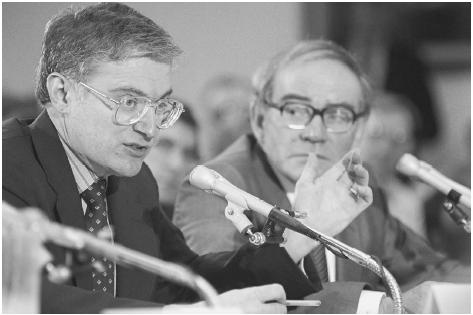
Congressman Owens introduced Fleischmann and Pons with soaring words: “The event, the possible achievement of solid state fusion, or the so-called cold fusion, is nothing less than a miracle with all the elements of a miracle – surprise, exaltation, disbelief, and skepticism.” Pons led the cold fusion charge and recounted the tale of their amazing discovery. He had brought a mock-up of their experiment to show the congressmen and held forth with technical slides to buttress his case, explaining the science and technology of the special electrochemistry in some detail. He explained the “competition” of two paths for the deuterium – either release as D2 gas bubbles at the palladium rod surface or deep penetration into the palladium. Pons drew a mental picture to prompt association with hot fusion, “… we end up having a low-temperature plasma inside the metal instead of atoms or molecules of deuterium” Palladium can dissolve within its structure a staggering amount of deuterium (or hydrogen) without forming gas bubbles within the lattice. With the palladium lattice, nature supposedly performs a wonder that our most sophisticated technology is incapable of doing otherwise. Pons said, “If you were to try to obtain that same voltage by the compression the hydrogen gas to get that same chemical potential of 0.8 Volts you would have to exert a hydrostatic pressure of a billion, billion, billion atmospheres…” Pons estimated the effective confinement time for the deuterium atoms to be 600 years! Ergo, he and Fleischmann had tamed fusion.
Mallove continued describing Stanley Pons’ experimental conclusions:
….The bottom line: “… the excess heat liberated is of such a magnitude that it cannot be explained by any chemical reaction.” But even more wondrous: “The heat generation continues indefinitely until the cell is turned off….” This time he fully owned up to the mystery of cold fusion: The amount of energy coming out was about a billion times more than could be explained with conventional d-d fusion giving those same measured levels of neutrons and tritium. “So apparently there is another nuclear reaction or another branch of the deuterium-deuterium fusion reaction that heretofore has not been considered, and it is that that we propose is, indeed, the mechanism of the excess heat generation.”
Responding to question about others who reported that they could not reproduce the effect, Eugene Mallove recounts Dr. Fleischmann’s response.
To questions about reproducibility, Fleischmann claimed that many people were setting up cells with dimensions and parameters that—not surprising to him—did not yield excess heat. Just to be sure no one could question their veracity, Pons announced that researchers from Los Alamos would soon be coming to the University of Utah to measure a working cell and would take it back with them for testing (after it was charged up with deuterium). He also said that other groups in the past week had come to the university and had been satisfied with what they saw.
They were supremely confident of their results. Pons told the committee: “For five and a half years I think we were our most severe critics, and we are still as sure as sure can be. We produce our data and we believe what we are seeing.” Fleischmann was only a shade more circumspect: “I do not know how to interpret our results in any other way than that we have observed a fusion phenomenon. So I’m still totally convinced about our work. But naturally, we shall have to look at everybody else’s work as well, including all unsuccessful experiments, and only time will show whether we are correct or not.” Fleischmann based this claim, he said, on adding up the total energy coming out of a typical cell over a period of 100 hours or more. The bottom line: The excess energy per cubic centimeter of material in the palladium electrode (5 megajoules per cubic centimeter; alternatively, 1.4 kilowatt-hours per cc) was over a 100 times “any conceivable chemical reaction in the system.” Fleischmann did not doubt that if the experiment were run 10 times longer, the total excess would be 1,000 times higher than a chemical process.”
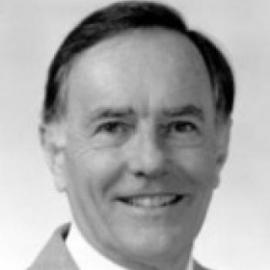
Also testifying in support of the claims was Dr. Robert Huggins, a Professor in the Materials Science and Engineering at Stanford University. Mallove writes that at the hearing, Dr. Huggins claimed 14% excess heat with a deuterium cell, while a light-hydrogen cell used as a control produces zero excess heat.
He put the magic conclusion directly up front, “The results that we
have obtained lend credence to the Fleischmann and Pons contention that a significant amount of thermal energy is evolved when deuterium is inserted into palladium, and that this phenomenon is quite different from the behavior of the otherwise analogous hydrogen-palladium system.” Not being experienced in nuclear measurements, however, he had no neutron or other radiation data to give further support to this remarkable result.
Huggins’ group was claiming about 14 percent excess heat in one of the experiments. The excess power generated in the deuterium-containing cell increased continuously, while the power curve of the light water cell remained essentially flat. Huggins concluded that there must be “an appreciable internal heat generation effect in the case of the deuterium-palladium system, regardless of the presence of any chemical or thermal effects in both systems.” The group had observed the phenomenon, he said, in more than one sample, on several occasions, and with different types of calorimeters. Moreover, Huggins asserted, “The magnitudes of the observed effects are comparable to those reported earlier by Fleischmann and Pons and lend strong support to the validity of their results.” Huggins told the panel that the now very puzzling reproducibility problem in his view had to do with the preparation of electrode materials, a theme he would consistently echo in weeks to come. He cautiously avoided a firm conclusion that the phenomenon was a nuclear effect, though he did cite the Walling-Simons theory (the helium-4 production branch of d-d fusion) as a possible explanation.

Another supporter came in the form of hot fusion scientist and editor of the journal Fusion Technology, Dr. George H. Miley, whose written statement to the Committee included, “I am personally convinced that solid-state catalyzed cold fusion occurs and this is an unexpected
and very important new regime of physics.” In fact, Professor Miley was a “proponent of fusion in any form”
Mallove writes in Fire from Ice:
Miley’s overall message advocated diversity in fusion research—the antithesis of the present direction of the financially strapped hot fusion program. “It’s very important to the research activities of this nation that we have seed money to allow smaller groups to do the exploratory research,” he said. “I’m a lifelong proponent of fusion. It has so many possibilities, that one of the difficulties of the moment is there is no roo for funding for innovative research. Something has to be done.” He was absolutely right.
Of course detractors were at the hearing as well. Dr. Ronald Ballinger, Professor of Nuclear Science and Engineering at Massachusetts Institute of Technology “blasted Drs. Fleischmann and Pons’ “communication”.
Eugene Mallove tells the story of how Dr. Ballinger told the Committee
…that the round-the-clock MIT experimenters had so far been unable to verify any cold fusion claims. “To my knowledge,” he said, “with the possible exception of the people at Stanford [University], and the results from Europe and the USSR, of which I have no personal knowledge, we have not had a single confirmation, scientific confirmation of the reported neutron emissions from the experiment, nor the excess heat. I want to be careful when I say scientifically verified.” He maintained that the MIT radiation detection measurements were at least 10 times more sensitive than the University of Utah measurements yet had found no neutrons. He also claimed that MIT’s calorimetry was also “probably about ten times more sensitive.”* Blasting Fleischmann and Pons’s style of scientific communication, he said, “… the scientific community has been left to attempt to reproduce and verify a major scientific breakthrough while getting its experimental details from The Wall Street Journal and other news publications.” He urged the committee to support verification experiments but not to commit major funds before that process had worked its way through.
As it turned out, the Massachusetts Institute of Technology’s attempts to reproduce the effect were woefully inadequate.
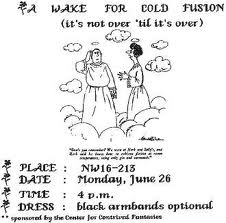
The MIT Plasma Fusion Center held a Wake for Cold Fusion before their experiments were even finished. Shockingly, they also edited their data, moving temperature readings downward to eliminate any possible signature of excess heat.
The report on the MIT physicists’ malfeasance was documented in MIT and Cold Fusion: A Special Report and prompted Dr. Eugene Malloves resignation from the MIT Science News Office.
A later analysis of both MIT and Caltech’s epic fails was performed by Drs. Melvin Miles and Peter Hagelstein who determined that in both cases, crippling designs and/or procedure damned their results. For details read New analysis of MIT Calorimetric Errors [[.pdf]
See also How Nature refused to re-examine the 1989 CalTech experiment by Jed Rothwell.

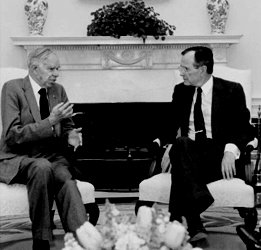



 Poster art by Tom Maguire
Poster art by Tom Maguire